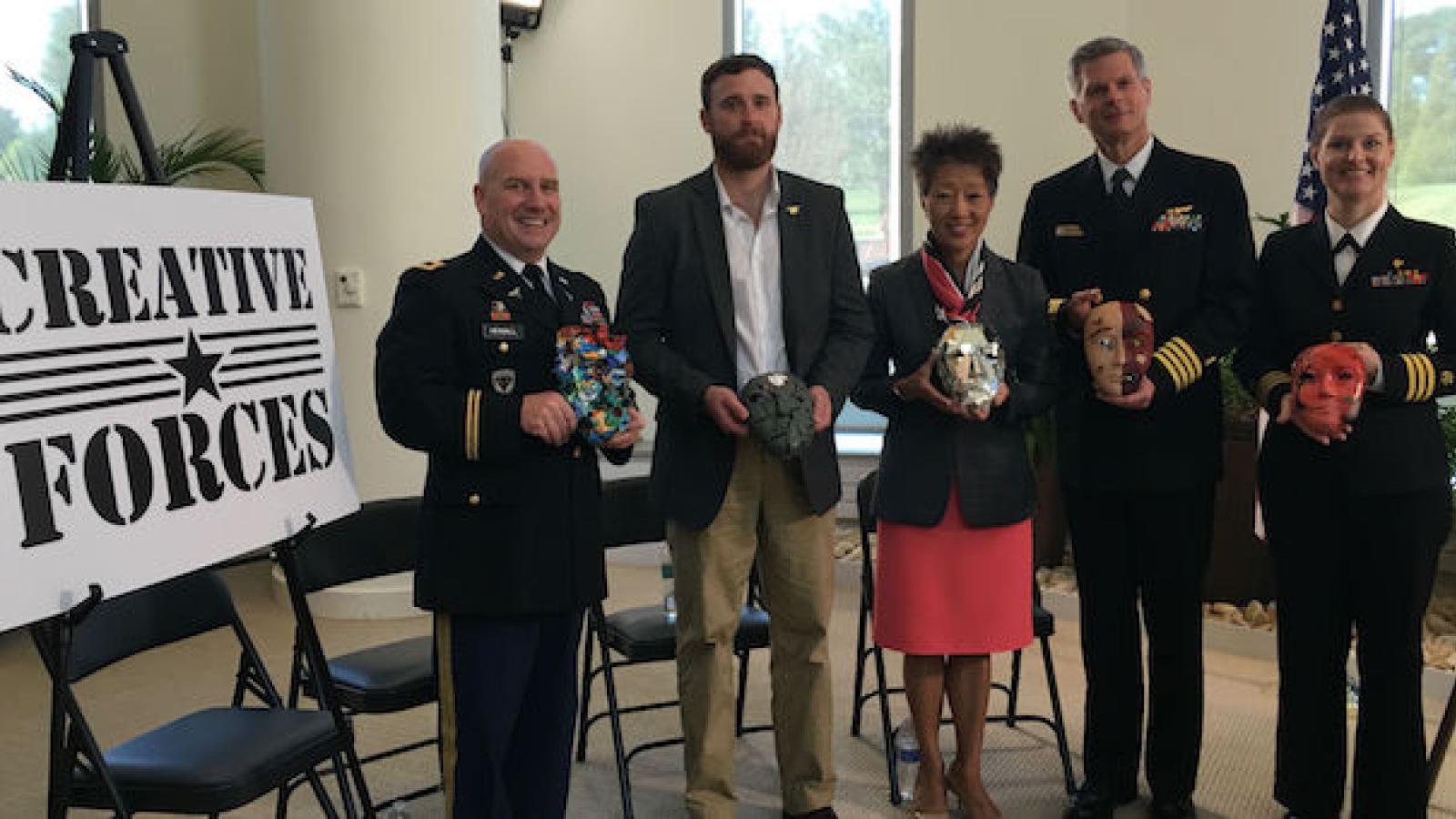A Creative Forces Chairman Update

One of the programs that keeps us particularly busy at the National Endowment for the Arts is Creative Forces: NEA Military Healing Arts Network. This is our partnership with the Departments of Defense and Veterans Affairs that places creative arts therapies at the core of patient-centered care and increases access to therapeutic arts activities in local communities.
As described in our March 28 announcement, we now have 11 clinical sites across the nation, have on-boarded a telehealth program to reach remote areas, are working with our partners to develop the community component of the initiative, and are gathering scientific research to begin charting next steps to fill the knowledge gaps about the intersections of the arts, military, and healing.
With all of this activity, I want to share some updates.
First, we are learning more about how transformational the program is for its participants. Service members have noted an increased ability to manage their pain. Their memory is more consistent, and they can better articulate how they feel and the painful episodes they may have experienced. Their family members and caregivers have also noted improved relationships with their loved ones, because of a more authentic and consistent way of communicating. And health administrators have noted that these arts programs are not only effective, but they have applauded their cost-effective and non-invasive nature.
With the community component of Creative Forces, we have an opportunity to support our service members, as well as veterans, by connecting the clinical creative arts therapy programs with arts programs in their local community. Community activities will also reach individuals who can benefit from participating in a community arts program, but have chosen not to receive clinical care. So, there will be more options for our service members and veterans and their families.
Then, beginning in June and continuing through the fall, the community sites will hold summits that bring together all of those locally who are interested in projects and programming that connect military populations with the arts. We’ve provided a handbook to the state arts agencies that are leading the charge on the summits on how best to engage with military institutions and individuals so the agencies and their arts partners can offer the most effective programs in the most accessible ways.
Capacity-building, the third prong of Creative Forces, is also advancing. The NEA has met with researchers to lay out the path forward in terms of which research goals to pursue; we are planning for a convening and report on the research agenda in September so stay tuned. In the meantime, here is the first research paper supported by Creative Forces that came out in February.
There are some wonderful Creative Forces stories on our blog, including Music Saved My Life: How Arts Therapy Helped a Master Sergeant Recover from the Wounds of War and a Spotlight on Creative Arts Therapies and Telehealth from Jill Sonke, the director of the Center for Arts in Medicine at the University of Florida in Gainesville.
Finally, we’ve created a shortened version of our Creative Forces video that is easy to share on social media. Take a look here.
Through Creative Forces and all of our other NEA programs in 50 states and 16,000 communities, we see that the arts are not off in a corner by themselves, and that they’re not only available to some people and limited to others. We see the power of the arts. They can help us think outside the box, and allow us to forge innovative methods and solutions to persistent challenges – even when those challenges might initially appear to be completely unrelated to the arts. The arts and creativity can illuminate new ways of thinking and seeing that can lead to better, more useful approaches, both with military populations and more.




